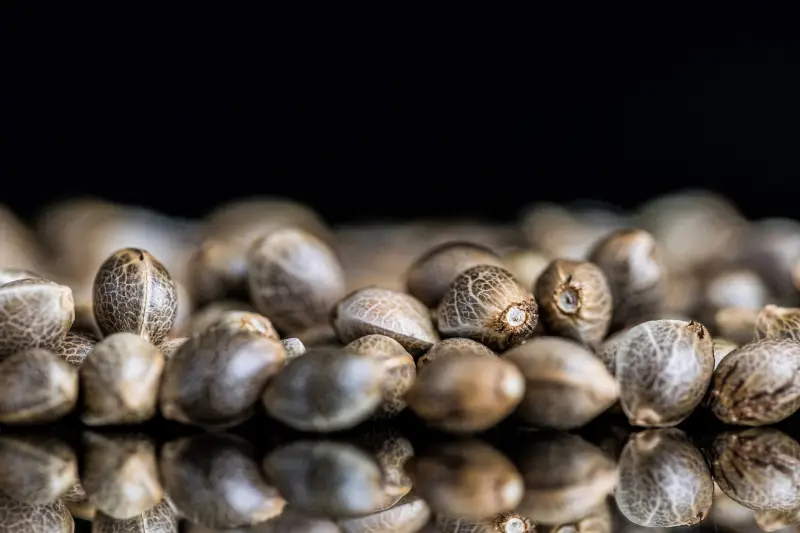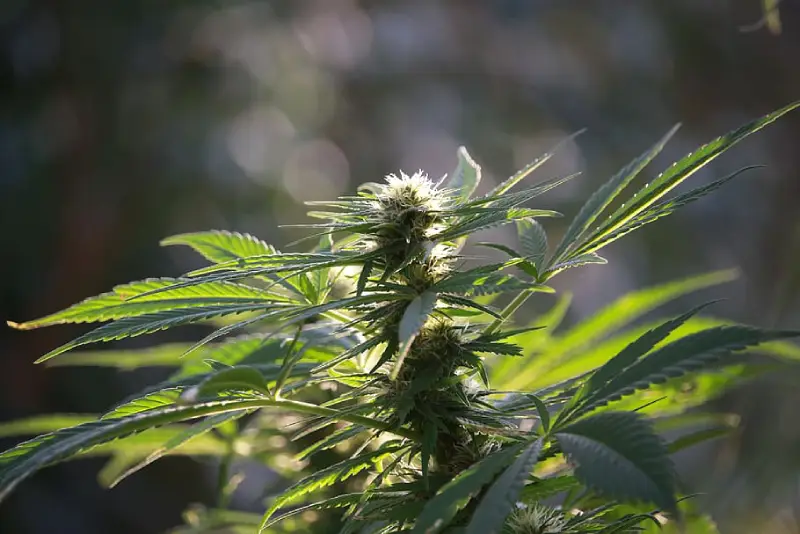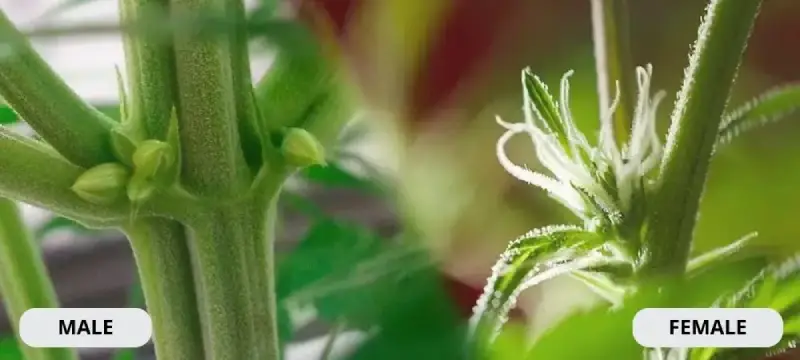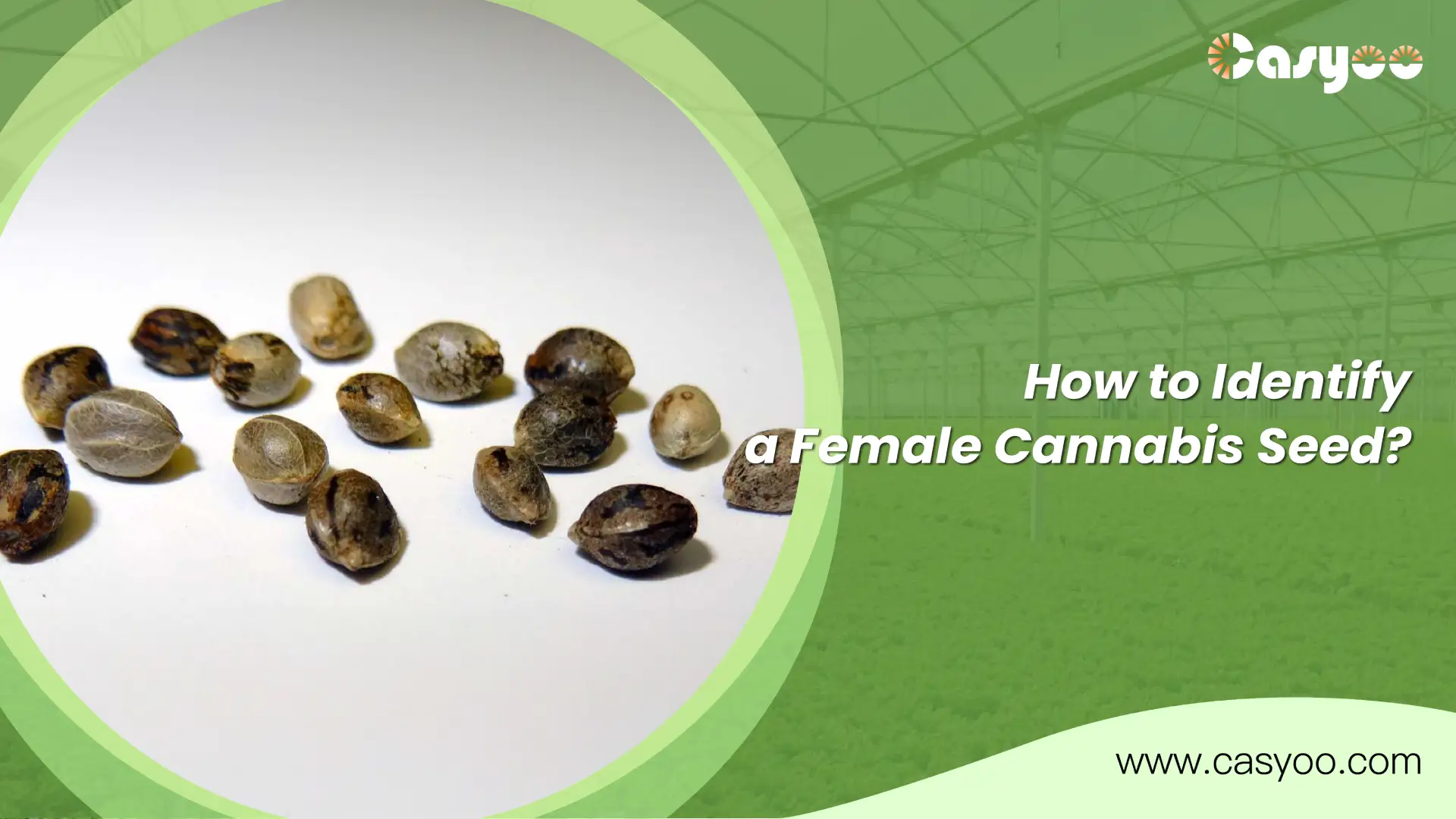As cannabis cultivation becomes more and more popular, sexing the plants has become a hot topic. Knowing how to identify a female weed seed can significantly impact the harvest of your indoor growing. Female plants can produce high-quality buds with high THC levels. In fact, unless you are breeding, male plants are usually discarded as soon as the gender of the plant is revealed. So, how do we identify female weed seeds?
What are female cannabis seeds?
Female cannabis seeds are able to develop into female cannabis plants, which are the most desirable plants for most cannabis growers. They contain the precious buds that make up all cannabis products, whether smokable, topical, or otherwise and produce coveted buds rich in cannabinoids such as THC and CBD. In contrast, male plants contain only trace amounts of THC. In addition, female cannabis plants also produce much higher yields than male plants. While male plants can occasionally be used to make concentrated products such as cannabis, female plants are more suitable for this purpose. The rough, tough hemp material extracted from female cannabis plants is also helpful for making ropes and other products that require strong fibers.
Why do we identify female cannabis seeds?

For several important reasons, it is imperative that you identify female cannabis seeds for your harvest:
- Elevated levels of cannabinoids: Female cannabis plants yield flowers that are greater in THC and CBD.
- Steer clear of pollination: Since female weed plants don’t make seeds, seeds can’t take their energy from producing flowers, which could lower the amount of cannabis harvested overall.
- Ensure quality: Growers can keep overall quality and cannabis concentrations consistent by solely cultivating female plants. This is because male plants can change the chemical makeup of female plants through pollination, which might potentially diminish cannabinoid amounts.
- Increase cannabis yields: Sexing your plants early can help save you time and money, avoiding wasted investments in male plants. In this way, growing growth exclusively female plants from the start guarantees that grow light, nutrients, and space are optimized for flowering.
When does your cannabis plant reveal its gender?

During the first three weeks of the blooming stage, known as the pre-flowering period, cannabis plants typically begin to display their gender.
During this period, pre-flowers appear at the plant’s nodes, which are where the branches meet the stem. These pre-flowers provide early signs of identifying the sex of the plant and can help you tell if it is male or female.
How to Identify Female Marijuana Seeds?
Identifying female weed seeds is a walk in the park if you know a few tricks. You can identify female weed seeds with the following 3 tips.
- Seed Shape: Female marijuana seeds usually have a rounder, more distinct shape compared to male marijuana seeds. Look for seeds that have a distinct plumper appearance.
- Look Color: Female seeds typically have a mixture of pale and dark hues, giving them a mottled or marbled look.
- Size: Generally speaking, female seeds are bigger than male seeds. When you are sorting a batch of marijuana seeds, their size is an important way to identify their gender.
Of course, if you are still unsure, you can plant them and wait for it to grow, and once your plant enters the pre-flowering stage (weeks 1-3 of the flowering stage), you can tell by looking at its pollen sacs.
- Stigma (Female Plants)

Female cannabis plants develop small hair-like structures called stigmas, often mistakenly called pistils. Usually white in color, these stigmas emerge from the calyx, a little pod-like structure located beneath the buds and branches (axillae). The start of the flowering stage is signaled by the presence of stigmas, which identify a female plant.
- Pollen Sac Formation (Male Weed Plants)
Male cannabis plants have calyxes that swiftly develop into pollen sacs and lack noticeable stigmas. These sacs, which resemble little clusters or balls, typically occur along the underside of the branches or in the leaf axils, the area where the cannabis leaf meets the stem. These sacs expand and release pollen as the plant ages, potentially fertilizing the female plant.
Remember that the only way to maximize your cannabis production and achieve a solid output is to be able to identify between female and male weed plants with clarity.
Can You Feminize Marijuana Seeds?
Now that you know the importance of female weed seeds, you might be wondering if there is a way to have only female seeds. Luckily, you can feminize marijuana seeds in three ways, including the colloidal silver method, the silver thiosulfate method, and the rotation method.
Of these, the most popular approach for feminizing marijuana seeds is the use of colloidal silver. A suspension of minute silver particles in water is known as colloidal silver. When ethylene, a hormone responsible for the formation of female flowers, is administered to female plants in the early stages of flowering, it interferes with ethylene production. Consequently, instead of producing female blooms, the treated female plants start to develop male flowers containing pollen sacs. Feminized seeds are produced by pollinating other female plants with the pollen from these treated female plants.
You should be aware, though, that plants with both male and female traits, or hermaphrodites, can emerge from any feminization technique.
FAQ
Q: Can Male and Female Marijuana Plants Grow Together?
A: Although these plants can technically grow next to one another, it is not advisable to grow male and female weed plants together. Keep your male and female cannabis plants apart if you want to harvest buds from the female plants. While male cannabis plants are not ineffective, it is best to keep them apart from female plants to provide the latter some room and energy to develop.
Q: What is the difference between male and female weed seeds?
A: Female weed seeds produce more THC than males. Additionally, female cannabis plants bear flowers, but male plants develop little buds that resemble balls. When the female cannabis seeds start to flower, they also develop V-shaped pistils; the male seeds do not have this structure. Lastly, female weed seeds have delicate orange and white bristles, but male weed seeds do not.
Q: Do female weed plants grow faster?
A: No, male weed plants tend to grow faster than female weed plants. 14 days after the start of the growth cycle, male plants are already taller than female plants. Also, male cannabis plants will start the flowering stage about 30 days before female cannabis plants.
Q: What are the early signs of male cannabis plants?
A: Early signs of male cannabis plants are small bulbs at the junction of the stem and branches. Three to four weeks after the plant germinates, they initially become visible.
Q: What are the early signs of female cannabis plants?
A: As early as four to six weeks following germination, you can see the female plant signs. They will have a cluster of small bulbs at their nodes. A sigma, or two protruding hairs forming a V shape, will be present on one end of the bulb.
Q: Is it possible to determine the gender of a cannabis plant before it blooms?
A: Yes. You can tell the sex of a cannabis plant based on its pre-flowering structure about a month after it germinates. Only female plants will bloom.
Q: What are the earliest signs of flowering?
A: The first sign is the appearance of pistils (small bulbs with sigmas) on female plants. Within three to four days after the pistils first appear, the pistils swell and form flower clusters. Then they turn into buds.
Q: What can induce flowering?
A: When the buds appear, the flowering stage begins, with the stamens developing pollen sacs and the pistils growing pistils. Light changes will induce flowering in cannabis. In the wild, cannabis usually flowers in late summer or fall. Once cannabis is exposed to a 12/12 photoperiod, it will be encouraged to enter the flowering stage.




